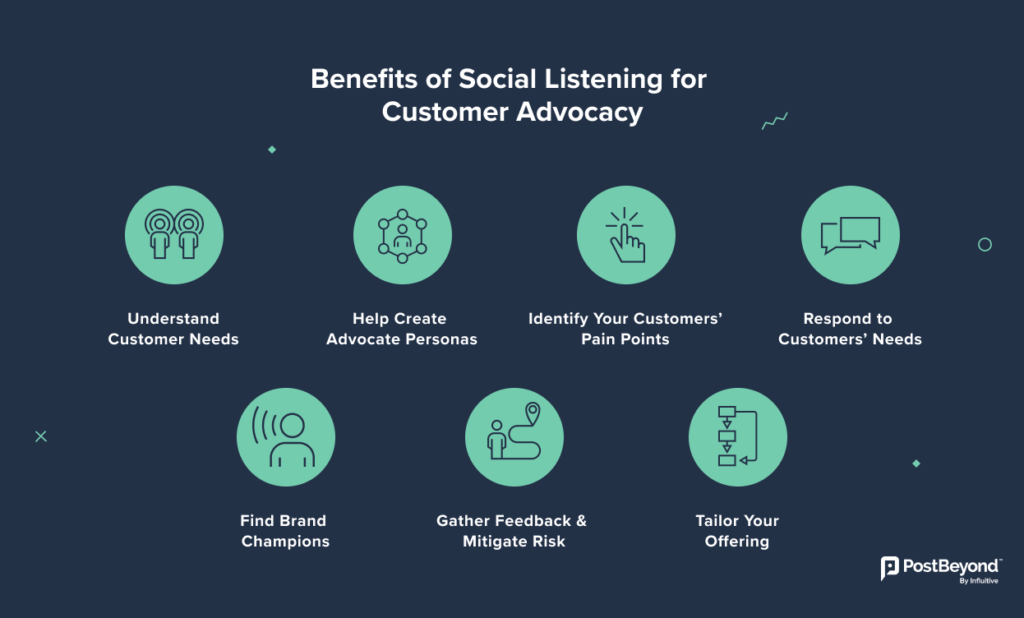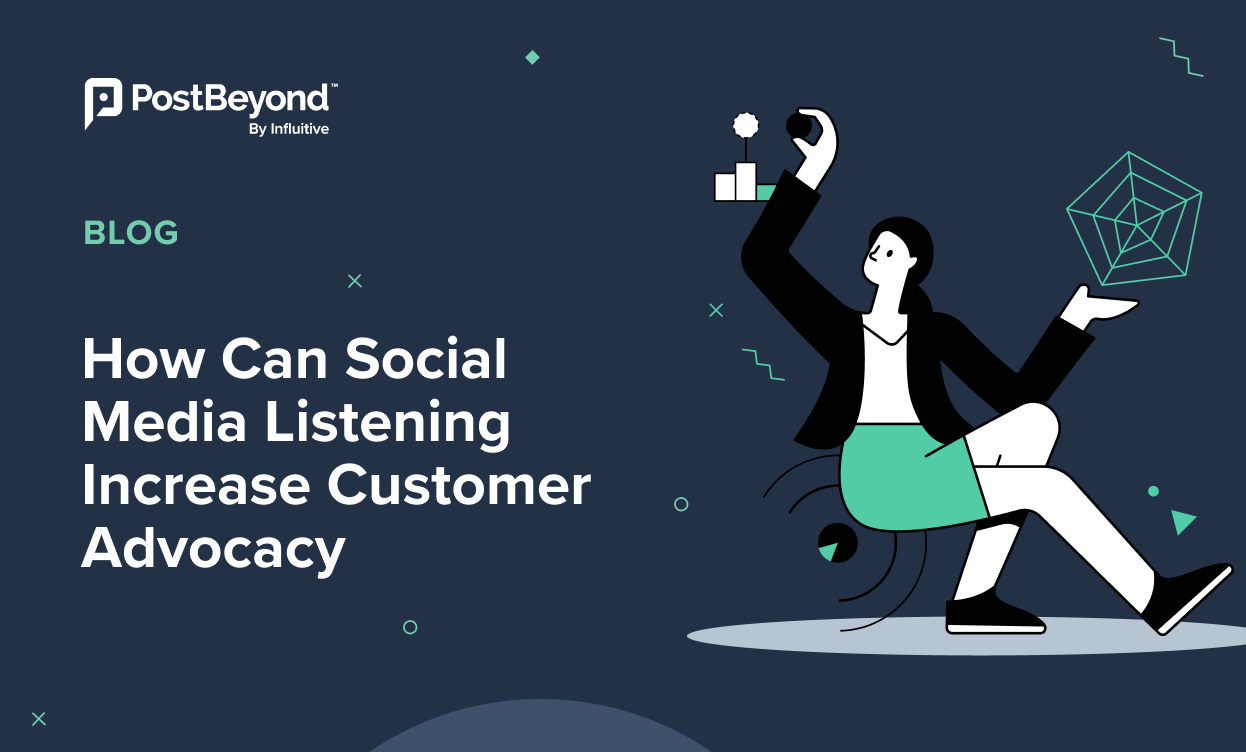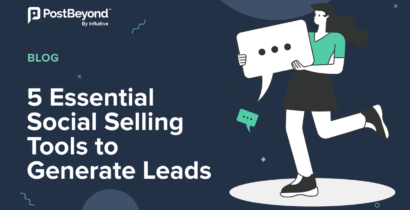In this post, we’ll take a look at how social media listening increases customer advocacy. Check out our other post on how you can use social listening tools for employee advocacy.
Today’s audiences don’t want to see or hear from marketers. In fact, you’re probably inundated with unsolicited DMs on LinkedIn, emails, and lots of other marketing noise. At some point, we’ll tune that stuff out and, ultimately, seek the content that’s truly useful. And in most cases, useful ideas, tips, and knowledge come from the people we trust, like our colleagues, friends, etc.
That’s the essence of brand advocacy as a whole – i.e., rallying people to talk about your brand and its work to their networks. We then break this down further into employee advocacy on one end, and customer advocacy on the other.
Now, whether you’re looking to start building a strategy or fine-tune your existing one, it’s always a good idea to see what your target advocates are saying online. Social media listening plays a huge role in feeding your customer advocacy and/or employee advocacy strategies.
What is Social Media Listening?
Social media listening is the process of monitoring your social media channels to see who is mentioning your brand, competitors, and other key terms.
It’s a proactive way of gaining insights about how people (like your customers) feel about your brand as well as your products and services.
Social media listening also gives you a window into people’s pain points, their desired goals, and other key insights. You can also use social media listening to get a stronger grasp of how your target audience is feeling about your competitors.
Basically, social media listening is a way to both understand how you (if it all) factor into your target audience’s conversations. In turn, you take that intelligence and put it into your broader data-driven strategies across sales, marketing, and product development.
So, for example, social media listening helps the product team learn the pain points and benefits your customers are experiencing by using your offerings. If you find them calling you out in their LinkedIn posts and comments because of a missing feature, you could at least get a gauge now of how important that feature is to them. In turn, you prioritize it in your roadmap.
Likewise, the sales team can see what your target customers are talking about. Using those key insights, you can join those online conversations as an informed problem-solver and drive your social selling activities.
And when it comes to marketing, you use these insights to lay the groundwork of your customer advocacy strategy. It’s just one step, but an important one because it now exposes exactly what people feel about your brand at this point in time. You basically build up from there.
Benefits of Social Listening for Customer Advocacy
So, what customer advocacy insights can you generate through social media listening?

1. Understand Customer Needs
You’ll gain in two ways from this.
First, you’ll see how your customers actually use your products and services. You’ll get an idea of what your customers are looking for in terms of gains or benefits. You can use those insights to gradually align yourself to your customers’ goals. When customers see that they’re achieving their goals through your offerings, they’ll want to talk about it.
Second, you’ll learn how your potential customers are feeling, not just about your brand, but your competitors too. This will give you a sense of your rivals’ gaps and the pain points no one in the industry has solved yet (i.e., new opportunities for your offering).
I could also give you an idea of what your competitors are doing from a product or messaging standpoint to pry your customers away.
2. Help Create Advocate Personas
Social media listening will also help you build a well-rounded understanding of who your target advocates really are, especially on social. You may already have the baseline data about their jobs, titles, and other top-line details.
But by listening to what they’re saying on social, you’ll also get a deeper insight of their personal interests, their networks, and how they want others to perceive them online. If someone’s clearly working towards building their personal brand, you can step in with help. And when you help an advocate, they’ll be more likely to stand for your brand.
3. Identify Your Customers’ Pain Points
Knowing the friction points stopping your customers from fully getting behind your products and services is critical. Be it missing features, a laborious customer service/help process, quality or reliability issues, or a high learning curve, these friction points are a problem. Not only will they stop a customer from advocating for your brand, but they could lead to customer churn or loss.
The key thing is that you may not get this information directly. Sometimes, a frustrated customer may not directly communicate with your brand. However, they could negatively talk about it with their own networks, and social media listening is an effective way to find those discussions.
These are important discussions. Yes, they might not be in your favor right now, but you can use the insights to address your customers’ pain points. There’s a good chance that it would have to involve many of your internal teams, like customer success, customer service, product, etc. But the outcome of this work is that you’ll emerge as a customer-obsessed organization – and that is a key ingredient to having a strong customer advocacy presence.
4. Respond to Customers
If you find customers asking for help through social, your employees can step in and help them out. This can involve anything from providing useful resources (like how-to guides about using your product) to providing an “in” by escalating a support ticket and owning the problem until it gets solved. These experiences leave a positive impact on your customers and will predispose them to eventually advocating for you due to the above-and-beyond response of your team.
This is an example of how employee advocacy closely ties into customer advocacy. When your employees positively carry your brand on social, their good actions could lead customers to also advocate for your brand.
5. Find Potential Champions
Social media listening can also help you find customer advocates.
By following conversations about your brand, products and services, you may find advocates that you weren’t originally aware of. These could be thought leaders listing you as one of the tools they use in their workflows. It could be someone suggesting your tool as a solution for a problem or question raised by someone else. It might even be a key influencer talking about why they abandoned your competitor and chose your brand instead.
In any case, you wouldn’t necessarily know about these brand champions unless you spent some time looking for the right conversations on social. When you find these people, you’ll definitely want to make sure they know that you love their work. From there, you’ll want to ensure these advocates are achieving their goals by using your offering and that they keep promoting you in their own authentic and credible ways.
6. Gather Feedback and Mitigate Risk
If the market’s aware of your future roadmap, you can use social media platforms to see how customers and prospects are feeling about it. You can use sentiment analysis to flag potential risks, like fear or anxiety about your product changing. In turn, you can build out resources to help your customers succeed in their work and in their companies as your product evolves.
Again, this proactive approach shows your customers that you truly care about their success. Its that kind of focus and attention to detail that will help your customers bat for you when it comes time to renew or, potentially, expand through upsells and cross-sells.
7. Tailor Your Offering
Finally, you can use your social listening strategy to keep tabs on not just how people are feeling about your brand, but industry trends as a whole.
Recently, amid customer concerns about a looming economic downturn, Influitive carried out its ‘Recession-Proof Marketing’ (RPM) roadshow. Influitive brought together its customers at each RPM event to share their thoughts on how they can navigate through a recession.
Initiatives like RPM show customers that you care about their general concerns. Not only that, but it shows that you want your customers to have a podium to share their thoughts and ideas, and to learn from their peers. Your customers get a sense that you’re also standing with them just as they’re standing with you. That’s a kind of bond that lives with the customer even when they move onto different roles and organizations. It builds long-lasting loyalty and support.




